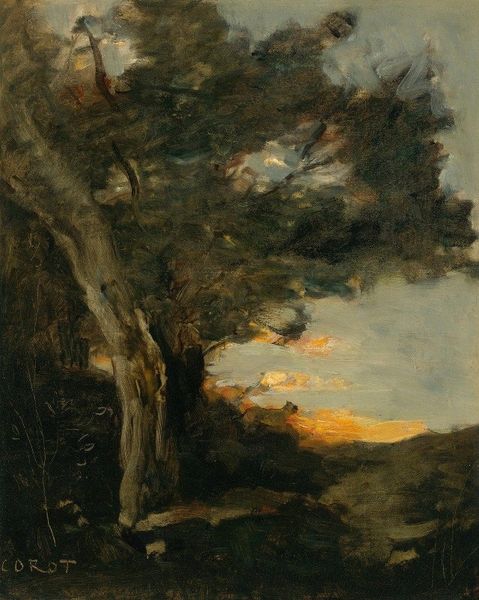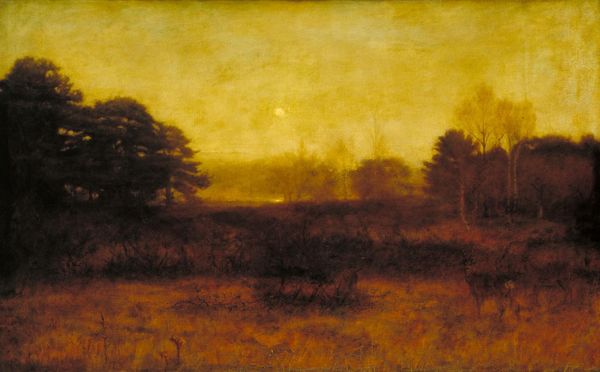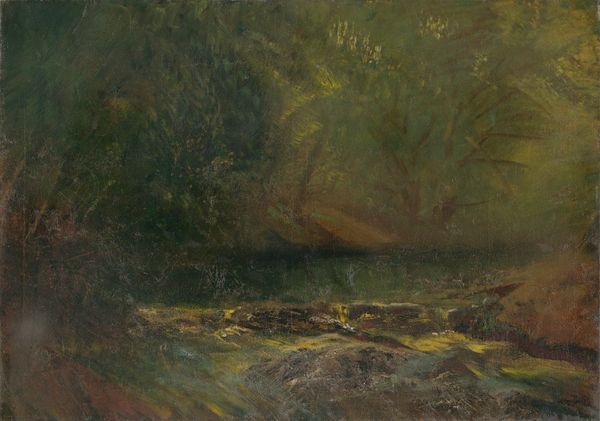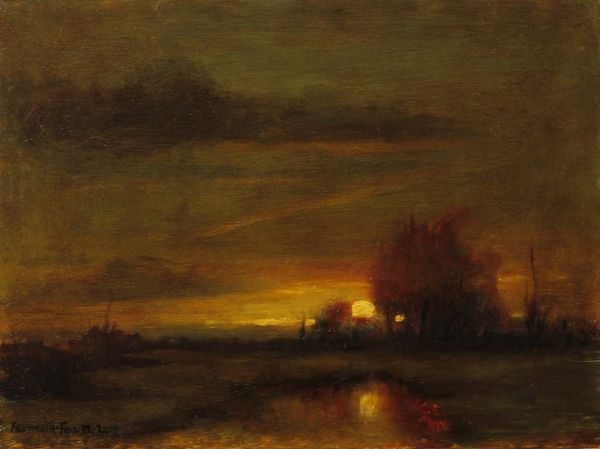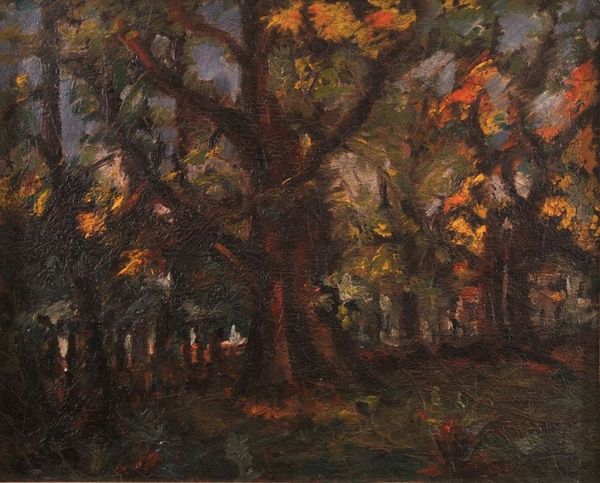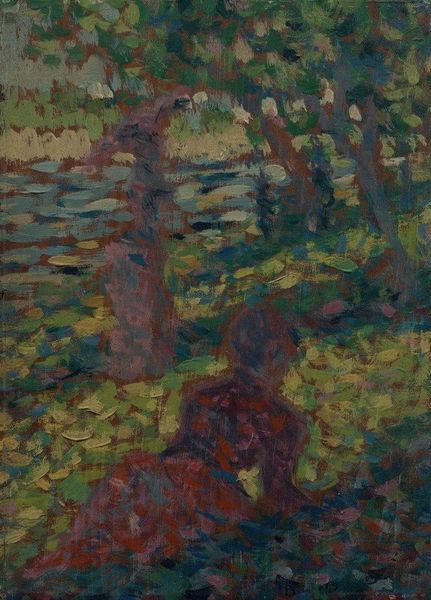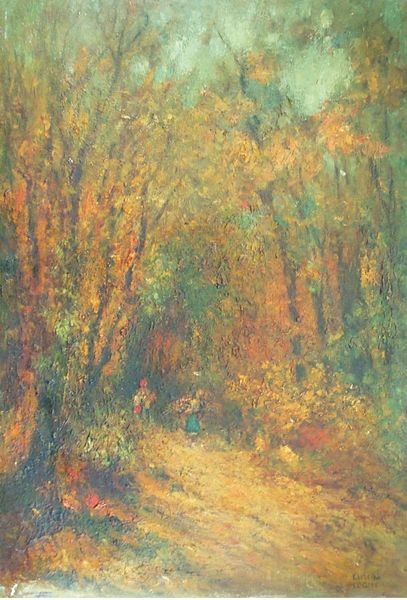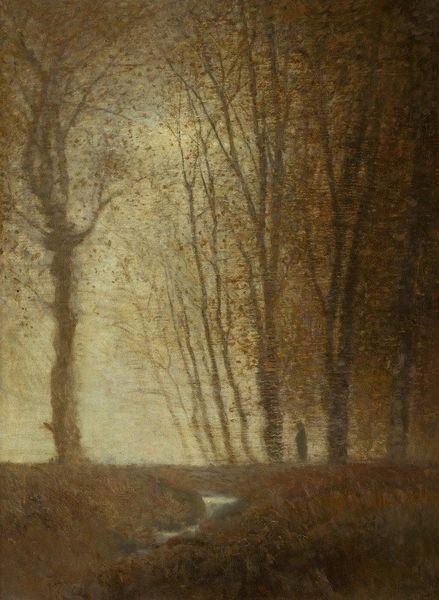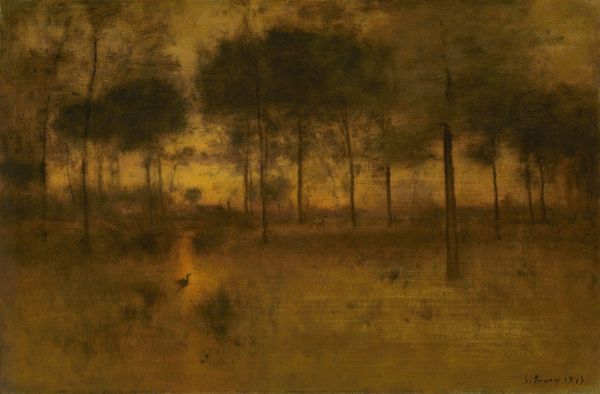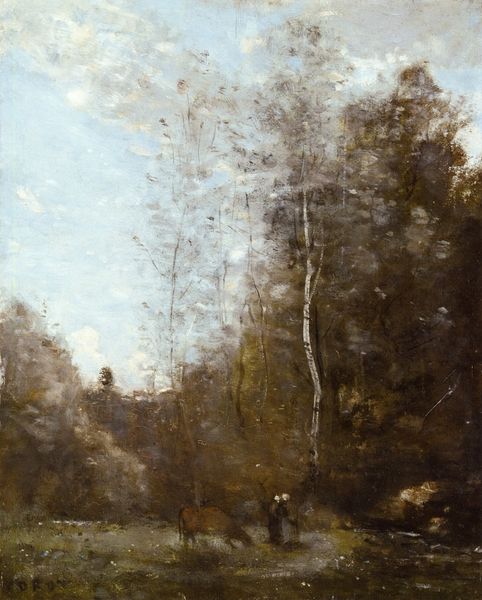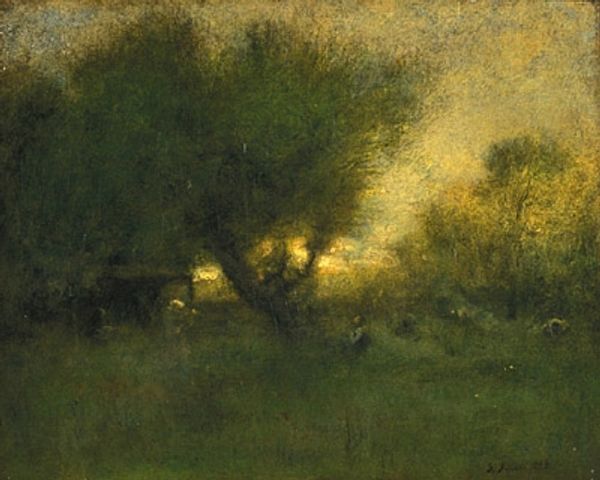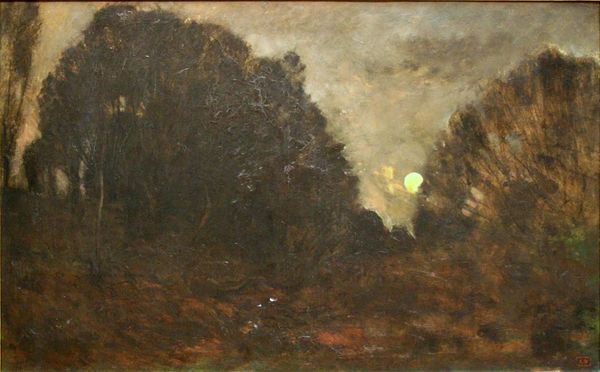
painting, oil-paint, impasto
#
rough brush stroke
#
painting
#
oil-paint
#
landscape
#
impasto
#
romanticism
#
hudson-river-school
#
genre-painting
#
realism
Copyright: Public Domain: Artvee
George Inness likely created this oil painting, *Landscape at Sundown; The Close of Day*, using techniques honed through years of practice in the mid to late 19th century. The tangible presence of the oil paint – its viscous drag across the canvas – is immediately apparent. Inness applied it with both loaded brushes and thinner, more gestural strokes, building up the image in layers to create depth and luminosity. The painting’s surface is a testament to the labor involved, demanding a practiced eye for color mixing, composition, and brushwork. Yet, Inness also aimed for a sense of immediacy, of capturing a fleeting moment. The choice of oil paint, with its capacity for blending and layering, allowed him to evoke the ephemeral qualities of light and atmosphere at sundown. He was able to capture that light with his process. Ultimately, this landscape reflects a complex interplay between the material properties of oil paint, the artist’s skillful manipulation, and the desire to express a deeper emotional connection with the natural world. It reminds us that even within the realm of painting, material and process are essential to the artist’s vision.
Comments
No comments
Be the first to comment and join the conversation on the ultimate creative platform.
